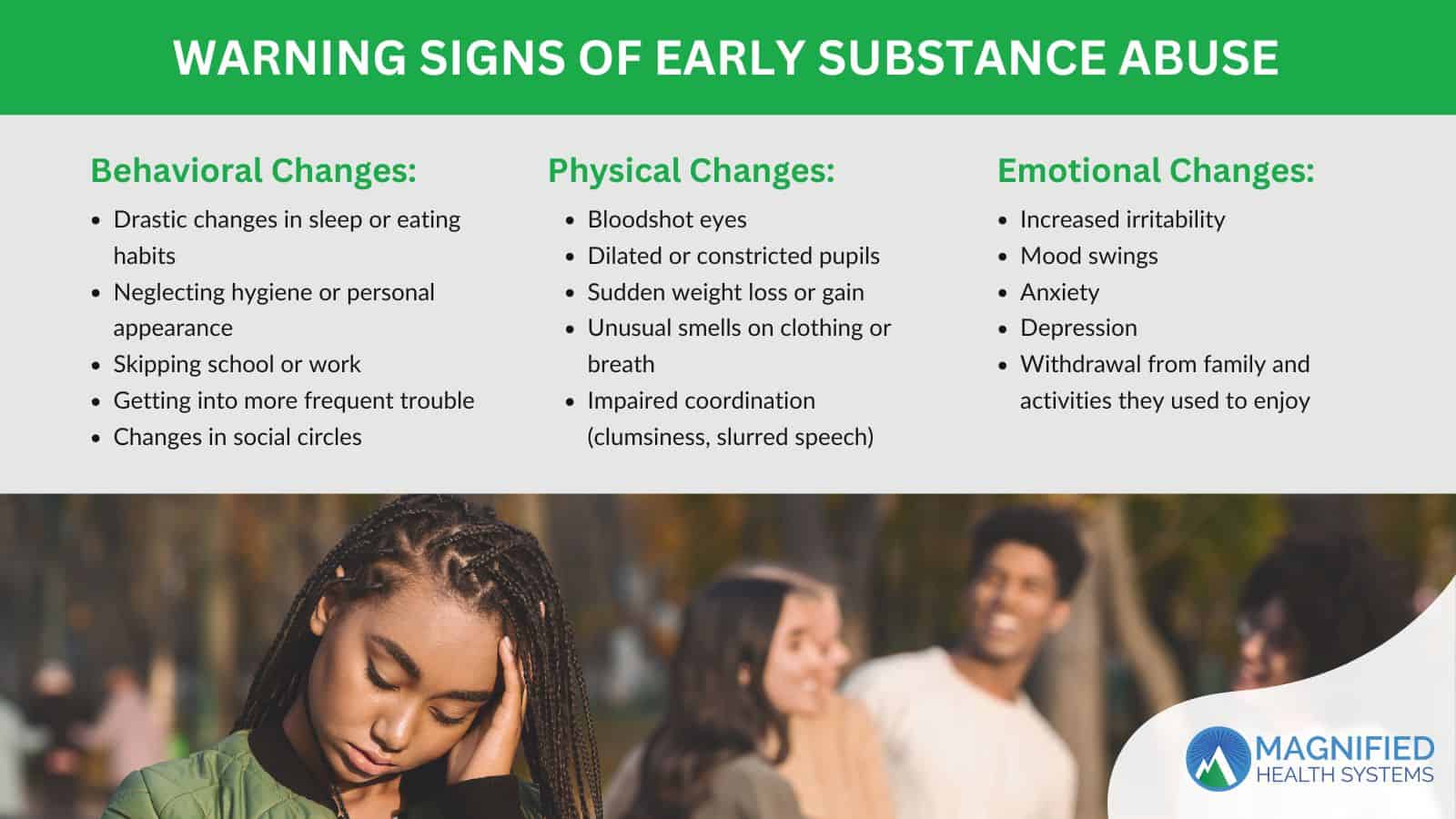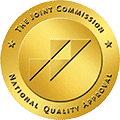Adolescence is a crucial stage shaped by evolution to ensure survival and successful reproduction. It is marked by physical changes like the development of secondary sexual characteristics. It’s also a time when teens transition towards adult-like thinking and social behaviors. During this period (10-19 years according to WHO) inherent risk-taking tendencies begin to develop as an individual grows from child to adult.
In the United States, a revealing statistic from the 2010-2011 National Survey on Drug Use and Health published by the Substance Abuse and Mental Health Services Agency (SAMHSA) in 2012 shows that roughly 16.6% of the 25.1 million adolescents aged 12-17 had their first experience with alcohol or illicit drugs during that period. This highlights the prevalence of early substance use among teenagers.
Early use of substances especially in the formative adolescent years is a known risk factor for addiction later in life. This is why it is especially important to avoid experimenting with substances during the adolescent years.
The term ‘early substance use’ has no scientific definition. However, a study conducted in 2017 titled ‘Age of onset of substance use and psychosocial problems among individuals with substance use disorders’ and published by the National Library of Medicine grouped users into early users (started before 17 years) and late users (started after 17).
However, several factors are considered. The type of substance also plays a role. Experimenting with alcohol at a young age (pre-teens) is considered riskier than starting caffeine use at the same age. Additionally, the frequency and intensity of use matter. Occasional experimentation is different from frequent or heavy use.
Scientific research often focuses on the link between the age of first use and the risk of addiction later in life. Studies suggest that starting substance use before adolescence (around ages 10-12) is particularly concerning. Government agencies like the National Institute on Drug Abuse (NIDA) emphasize the importance of delaying substance use for as long as possible, highlighting the developing brain’s vulnerability.
Adolescence is a period of immense change, marked by the rapid development of the brain. This includes areas crucial for decision-making, impulse control, and reward processing. Unfortunately, early exposure to substances like drugs and alcohol can significantly disrupt this delicate developmental process, increasing the risk of lifelong addiction problems.
The adolescent brain is akin to a building under construction. The prefrontal cortex, responsible for executive functions like judgment and planning, is still maturing well into a person’s twenties as discovered by Steinberg L. in her 2008 study ‘A neurobehavioral perspective on adolescent risk-taking.’
Volkow N. D., & Crews F. T. in their 2000 research ‘Neuropharmacology of addiction’ showed that substances like alcohol and drugs can act as scaffolding malfunctions, interfering with the intricate connections and pathways forming within these critical areas. This can lead to impaired decision-making, making teenagers more susceptible to impulsive choices and risky behaviors, including continued substance use.
The reward system, a network of brain regions that motivates us to seek pleasurable experiences, is highly active during adolescence. Drugs and alcohol artificially stimulate this system, creating an intense rush of dopamine, a neurotransmitter associated with pleasure and reward.
Repeated exposure to these substances can lead to a phenomenon called sensitization, where the brain becomes more attuned to the effects of the drug. According to a 1993 study by Robinson, T. E., & Berridge, K. C., titled ‘The neural basis of drug craving: An incentive-sensitization theory of addiction’ sensitization results in the user requiring increasingly larger amounts to achieve the same pleasurable feeling. This vicious cycle sets the stage for a cycle of dependence and craving, a hallmark of addiction.
Early substance use can have lasting consequences on brain structure and function. Jacobus, J. et al, in 2008, conducted a study titled, ‘White matter integrity in adolescent substance users.’ Their study suggested that drugs and alcohol can alter the development of white matter, the neural pathways that facilitate communication between brain regions. This can lead to cognitive problems, difficulty with learning and memory, and increased impulsivity, all of which can contribute to addiction vulnerability.
Early experimentation with relatively less potent substances like marijuana might not be inherently addictive. However, it can create a gateway effect, increasing the risk of using more addictive substances later in life. This theory was proposed by Winters KC and Arria A. in their 2011 study ‘Adolescent Brain Development and Drugs.’ This effect is due to a combination of factors, including desensitization to the initial drug’s effects, increased risk-taking behavior, and social influences within peer groups where substance use is prevalent.
Repeated substance use during adolescence can solidify patterns of behavior that are difficult to break in adulthood. The social aspects of drug use, for example, can become ingrained in a teenager’s life, making it harder to avoid situations where substances are present. This, coupled with the brain’s increased craving for the drug due to sensitization, can lead to a powerful pull towards continued use.
It’s important to remember that addiction is a complex disorder with multiple contributing factors. While early exposure significantly increases the risk, genetics, mental health, and social environment also play a role.
Teenagers face a complex web of influences when it comes to substance abuse. While there’s no single predictor, the National Institute on Drug Abuse (NIDA) identifies various genetic and environmental factors that elevate a teen’s risk. A 2017 study by Meier MH et al titled ‘Which adolescents develop persistent substance dependence in adulthood? Using population-representative longitudinal data to inform universal risk assessment’ found the following are risk factors associated with early (teen) substance abuse.

While risk factors can raise concerns, it’s important to remember that not every teen with a risk factor will develop a substance abuse problem. Conversely, some teenagers might struggle with substance abuse even without those risk factors.
The key lies in recognizing the warning signs, which can often manifest as changes in behavior, physical health, or emotional well-being. Here are some red flags to watch out for, adapted from resources by reputable organizations:
It’s important to note that these signs can also be caused by other factors like stress or underlying mental health conditions. However, their presence should prompt a conversation with the teenager or a healthcare professional to explore the root cause and provide appropriate support.
While complete abstinence is ideal, the earlier and more frequent the substance use, the greater the risk of addiction. It’s important to remember that individual factors also play a role. However, open communication with teenagers about the dangers of early substance use and delaying initial exposure is crucial.
Yes, certain substances like cocaine and heroin are highly addictive and carry a greater risk of long-term problems. However, even seemingly less potent substances like marijuana can increase the likelihood of using more addictive drugs later on.
The lack of recreational activities contributes to early substance use and lifelong addiction by leaving individuals, particularly adolescents, without healthy outlets for their energy and emotions. Without access to positive activities such as sports, arts, or community events, young people may turn to substances out of boredom or as a way to fit in with peers. Engaging in recreational activities can provide a sense of belonging, purpose, and achievement, which are crucial for healthy development. By filling this gap, communities can reduce the likelihood of early substance use and its progression into lifelong addiction.
Peer pressure during adolescence increases the risk of lifelong addiction by encouraging experimentation with substances at a vulnerable developmental stage. Adolescents are highly influenced by their peers and may use substances to gain social acceptance or to avoid rejection. Early substance use can alter brain development, making individuals more susceptible to addiction later in life. Additionally, the habits and behaviors formed during adolescence can become ingrained, leading to continued substance use into adulthood. Addressing peer pressure through education, fostering self-esteem, and providing supportive peer networks can help mitigate this risk.
Early substance exposure can have significant long-term impacts on brain development, affecting areas related to decision-making, impulse control, and emotional regulation. During adolescence, the brain undergoes critical development, and the introduction of substances can interfere with these processes. This can lead to cognitive impairments, increased susceptibility to mental health disorders, and a higher likelihood of developing addictive behaviors.
Not necessarily. A single instance of experimentation doesn’t guarantee addiction. However, it’s a good opportunity to have an open and non-judgmental conversation with your child about the risks and consequences of substance use.
Yes. Early exposure can negatively affect brain development, leading to cognitive problems, difficulty with learning and memory, and increased impulsivity. These issues can have a lasting impact on a person’s life.
Don’t wait. Approach them calmly and express your concern. Focus on open communication and offer support. Seek professional help from a healthcare provider or therapist who specializes in adolescent substance abuse.
Absolutely! Many organizations offer resources and educational materials on preventing teen substance abuse. The National Institute on Drug Abuse (NIDA) and the National Council on Alcoholism and Drug Dependence (NCADD) are good starting points.
Get confidential help 24/7. Call now for:
Related Articles
Get Help Now
Medical Advice Disclaimer
Magnified Health Systems aims to improve the quality of life for people struggling with substance use or mental health disorder with fact-based content about the nature of behavioral health conditions, treatment options and their related outcomes. We publish material that is researched, cited, edited and reviewed by licensed medical professionals. The information we provide is not intended to be a substitute for professional medical advice, diagnosis or treatment. It should not be used in place of the advice of your physician or other qualified healthcare providers.

Dr. Bickley graduated from U.C. Irvine with honors: Phi Beta Kappa, Golden Key International Honor Society, Cum Laude. He has been featured on national radio and print media. He is also a frequent lecturer at National Conferences. He holds an A.S. degree in Drug & Alcohol Studies, and two B.A. degrees in Criminology & Psychology, and masters and doctoral degree in Clinical Psychology. He is a licensed California Drug & Alcohol Counselor Level II, a licensed Clinical Supervisor and is certified in treating Eating Disorders.
Call Us Now, Our Admissions Team Is Standing By And Available 24/7.

Head Office Location:
1530 N Federal Hwy Lake Worth, FL 33460
Contact & Feedback:

We are here for you.
We are here for you, Call us and get started!
